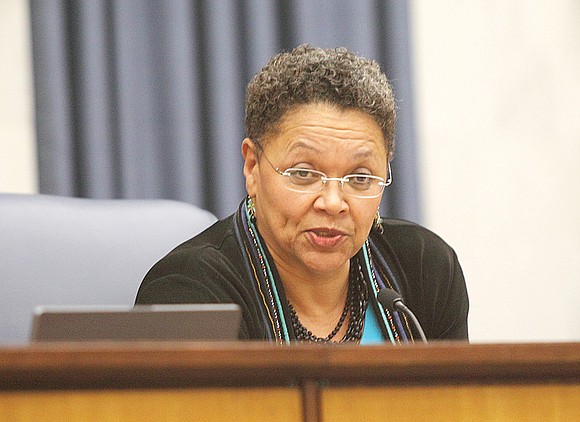$200M loss spurs City Council to revise real estate tax abatement program
Jeremy M. Lazarus | 1/17/2020, 6 a.m.
For at least two decades, Richmond has primed the redevelopment pump by allowing individuals and companies that improve aging houses, apartment buildings and commercial properties to pay reduced property taxes over 10 years without any restrictions.
While credited with sparking more than 7,500 projects that primarily reno- vated, upgraded or replaced houses and apartments that were in poor shape, the program’s price tag has raised eyebrows, particularly with the continuing boom in development.
According to the CityAuditor’s Office, the program has resulted in the loss of more than $200 million in tax revenue since 2006. That’s the amount of property tax money saved by those buying and undertaking the projects.
But that could soon change.
Three members of City Council are spearheading the first major overhaul of the program that would limit the tax savings to those willing to set aside 30 percent of the apartments or houses they redevelop for people with incomes at or below 80 percent of the regional median income.
Currently that’s $48,400 for an indi- vidual and $69,100 for a family of four in the Richmond area, where half the people earn more than $83,400 a year and half less, according to the U.S. Department of Housing and Urban Development.
Those who accept the restriction would receive the tax-reduction savings for 15 years and potentially for 30 years if the General Assembly approves City Council-supported legislation.
Councilwoman Ellen F. Robertson, 6th District, has spearheaded the effort for more than a year. Joining her as co-
patrons of the measures to revamp the tax credits are Council President Cynthia I. Newbille, 7th District, and 9th District Councilman Michael J. Jones.
Their proposed ordinance is to get a first hearing Tuesday, Jan. 21, in the council’s Land Use, Housing and Transportation Committee. Ms. Robertson is chair of the committee, while Dr. Jones is a member.
If the proposal clears the committee and passes the full council as expected, the overhaul would go into effect July 1.
Ms. Robertson considers this a significant step to encourage development of more apartments and houses that are affordable for working people.
The reform would require those approved for the program to reapply annually to ensure they are making sure part of the housing meets the affordable standard. It also would require owners approved for the tax abatement to maintain their properties.
Ms. Robertson said the change is not a magic wand for housing policy, but another needed tool to help the city boost interest in the development of affordable housing.
Among other things, the proposal does not use the city’s median income, which is currently pegged around $49,000 a year, or 41 percent less than the regional median. Ms. Robertson noted that the HUD regional median income is the general standard that is used in the real estate world.
Still, as a result of the higher median income, the proposal appears unlikely to generate more housing for people for whom affordable housing is a growing challenge — those whose incomes fall below 50 percent of the city median, or less than $25,000 a year.
That includes public housing residents, whose average income is less than $12,000 a year and below 25 percent of the city median.
Richmond’s reputation for a high level of eviction, in part, reflects the widening gap between incomes, rents and home prices.
Whatever the shortcomings, Dr. Jones believes revamping the tax abatement program “is long overdue.” He said that a 2017 audit of the program indicated the city is foregoing $18 million to $20 mil- lion a year in tax revenue. “That’s a lot of money,” he said, and adds to the challenge City Council faces each year in seeking to balance the budget and find funding for schools and other critical needs.
He said the program had been aimed at getting people to deal with boarded-up and decaying properties that blighted neighborhoods, but too often was used to overhaul properties that didn’t fit that mold.
The City Auditor’s Office found at least 70 properties in the program that were valued at more than $500,000 prior to undergoing rehabilitation, with 37 of those properties assessed at between $1 million and $2.8 million afterward.
Like other residential property in the program, owners were eligible to save on property taxes for 10 years. For the first seven years, the property’s value is fixed at the assessed value in place before the work was done and then rising by 25 percent over the next four years to finally reach 100 percent.
For example, the owner of a house valued at $50,000 before the work is started would continue to pay the same $600 a year in taxes for seven years, even if the actual assessed value of the property rose. If the house increased in value to $200,000, the owner would not pay the full amount of taxes, $2,400 a year, until 11 years had passed.








